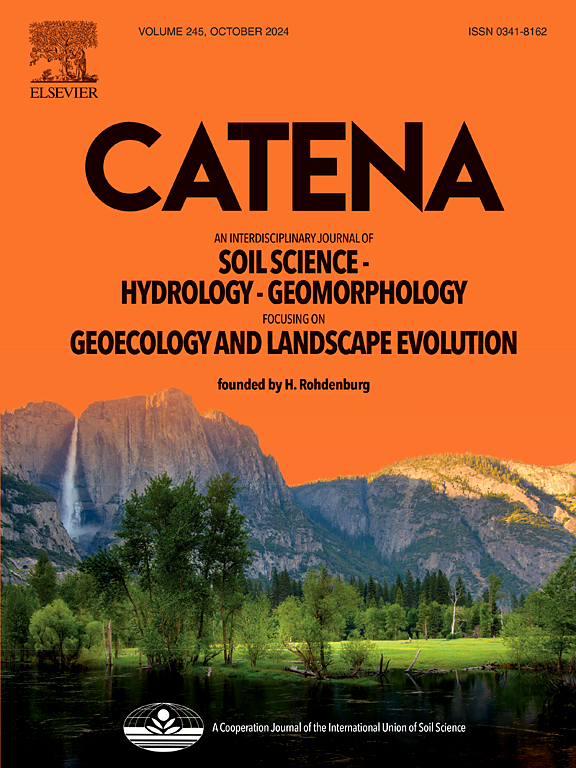An innovative approach to evaluate debris flow scale-activity across diverse aridity zones: Fusion of image recognition and geomorphometric analysis
2025-03-01 null null 250(卷), null(期), (null页)
Debris flows, which can be ferocious in mountainous regions, have been increasingly rampant in arid areas, threatening nearby residents and properties. Inadequate high-quality data, labor-intensive image interpretation, inefficient field surveys, and traditional singular-variable analyses underscore the necessity for an integrative and efficient approach to evaluate debris flow scales and activities. Thus, an integrative debris flow scale-activity assessment methodology is developed, composed of parameters commonly studied and those feasible for extraction from accessible sources, leveraging dynamic avulsion of fans with distinct morphometry and boulder visibility in images. Resultantly, channel number, fan size, maximum critical shear stress, and debris flow event frequency are acquired as potential index parameters via geomorphometric analysis and image segmentation. The composite index generation, established based on these parameters and principal component analysis, is highly effective and accurate, benefiting from program efficiency, interpretation-based error control, parameter validation, and data preservation. Comprehensively, three types of debris flow processes were identified in the study region, distinguished by water content and sediment composition. Parameter and index results reveal considerable spatial-temporal disparities, complex relationships, and clustering patterns (Moran's I = 0.08) across debris flow and aridity types owing to environmental variances. The index (degree) exhibits an increasing-decreasing transition from low-index hyper-concentrated flows to high-index debris floods and debris flows and declines to less impactful debris floods as aridity decreases due to different sediment and water discharge and source. Generally, high indices tend to concentrate in the southern and glacierized northern valleys, exhibiting medium impact ranges, high maximum critical shear stress, and dynamic channel activities regarding channel quantities and event frequencies. Hence, the results correlate with debris flow formation criteria and mechanisms, suggesting a reliable composite indicator for debris flow assessment and providing guidance for debris-flow risk mitigation.
相关推荐
- Microtopography Affects the Diversity and Stability of Vegetation Communities by Regulating Soil Moisture [2025-03-01]
- Assessing the spatiotemporal changes and drivers of ecological security by integrating ecosystem health and ecosystem services in Loess Plateau, China [2025-03-01]
- Erosion Model for Wind-Blown Sand Flow at Earthen Sites in Arid Environment, Northwest China [2025-03-01]
- Urban green spaces enhanced human thermal comfort through dual pathways of cooling and humidifying [2025-03-01]
- Evaluation of adaptive capacity of slope regulation and storage measures on the Loess Plateau under drought stress [2025-03-01]



